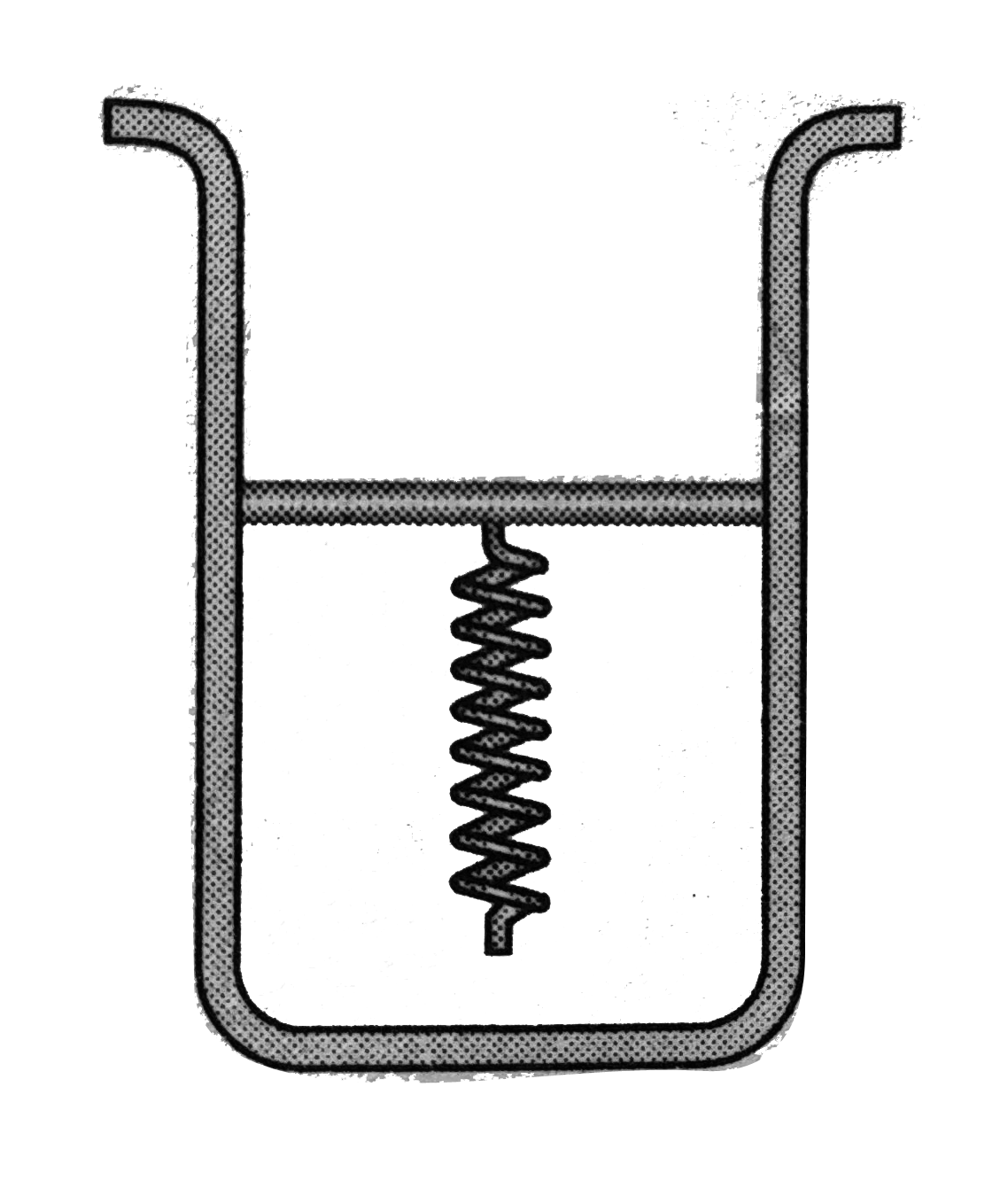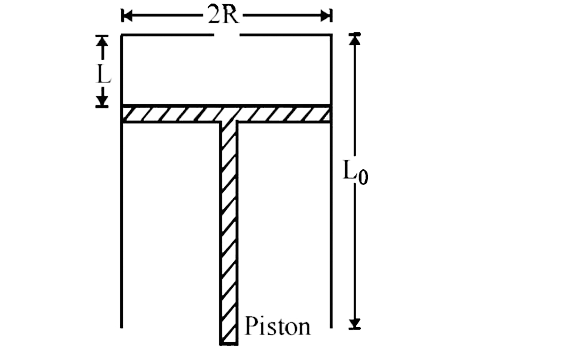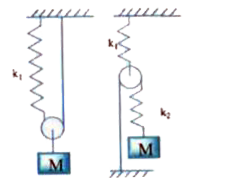A cylinder is fitted with a piston, beneath which is a spring, as in the figure. The cylinder is open at the top. Friction is absent. The spring is 3600N/m. The piston has a negligible mass and a radius of 0.025m (a) when air beneath the piston is completely pumped out, how much does the atmospheric pressure cause the spring to compress? (b) How much work does the atmospheric pressure do in compressing the spring?

The correct Answer is:A, B, C, D
(a) p0A=kx
∴x=p0Ak(p0)(πr2)k
=(1.0×105)(π)(0.025)23600
=0.055m=5.5cm.
(b) Work done by atmospheric pressure
W=12kx2=12(3600)(0.055)2
=5.445J
Topper's Solved these Questions
- FLUID MECHANICSBOOK - DC PANDEY ENGLISHCHAPTER - FLUID MECHANICSEXERCISE - Example 13.1
1 Video
- FLUID MECHANICSBOOK - DC PANDEY ENGLISHCHAPTER - FLUID MECHANICSEXERCISE - Example 13.2
1 Video
- FLUID MECHANICSBOOK - DC PANDEY ENGLISHCHAPTER - FLUID MECHANICSEXERCISE - Level 2 Comprehension Based
7 Videos
- EXPERIMENTSBOOK - DC PANDEY ENGLISHCHAPTER - EXPERIMENTSEXERCISE - Subjective
15 Videos
- GENERAL PHYSICSBOOK - DC PANDEY ENGLISHCHAPTER - GENERAL PHYSICSEXERCISE - INTEGER_TYPE
2 Videos
Similar Questions
Knowledge Check
In the previous question if the smaller piston is pushed in through 6cm, how much does the longer piston move out?
A23 cmB32 cmC13 cmD12 cm
A fixed thermally conducting cylinder has a radius R and height L0. The cylinder is open at the bottom and has a small hole at its top. A piston of mass M is held at a distance L from the top surface, as shown in the figure. The atmospheric pressure is P0.

The piston is now pulled out slowly and held at a distance 2L from the top. The pressure in the cylinder between its top and the piston will then be
View SolutionA gas filled in a cylinder fitted with a movable piston is compressed. What is the nature of work done by the applied force?
View SolutionFind the stretch in the springs shown in figure. The respective data are given in the figure. The friction and masses in pulleys are negligible. Find the extension in spring?

View SolutionA fixed container is fitted with a piston which is attached to a spring of spring constant k. The other and of the spring is attached to a rigid wall. Initially the spring is in its natural length and the length of container between the piston and its side wall is L. Now an dideal diatomic gas is slowly filled in the container so that the piston moves quasistatically. It pushed the piston by x so that the spring now is compressed by x. The total rotaional kinetic energy of the gas molecules in terms of the displacement x of the piston is (there is vacuum outside the container)

View SolutionWhen the piston of common water pump is raised its piston valve opens.
View Solution_S01_081_Q01.png)
A cylinder fitted with piston as shown in figure. The cylinder is filled with water and is taken to a place where there is no gravity mass of the piscton is 50 kg. the system is accelerated with acceleration 0.5m/sec2 in positive x-direction find the force exerted by fluid on the surface AB of the cylinder in decanewton. Take area of cross-section of cylinder to be 0.01 m2 and neglect atmospheric pressure (1 deca newton=10N)
View SolutionA spring of spring constasnt 50 N/m is compressed from its natural position through 1 cm. Find the work done by the work done by the spring force on the agency compressing the spring.
View Solution